How Scandinavian dressing can make us happier
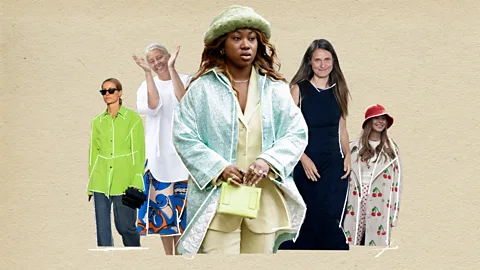 Serenity Strull/ BBC/ Getty Images
Serenity Strull/ BBC/ Getty ImagesNordic style is easy to wear – and can even cheer us up, say its fans. As Copenhagen Fashion Week approaches, we explore the fun, functional Scandi-girl style movement.
One bright morning last autumn, a swarm of photographers crammed on to a narrow pavement. As their shutters clicked, a street-style parade passed by: Chanel bags swinging across shredded jeans jackets, sheer ballet tutus paired with shiny spike heels, menswear-inspired suits embroidered with tiny beaded strawberries. Top models like Paloma Elsesser and TikTok stars like Maya Stepper came through; Pamela Anderson strolled by in a crisp white shirt and ivory slacks.
The scene was on a par with what you'd see in street-style hubs like Milan, New York and Paris. But this was happening in Copenhagen, a city with a population that's just 10% of London's, and better known for its Little Mermaid statue than its fashion chops. How did this teeny Nordic city become the new epicentre of cool?
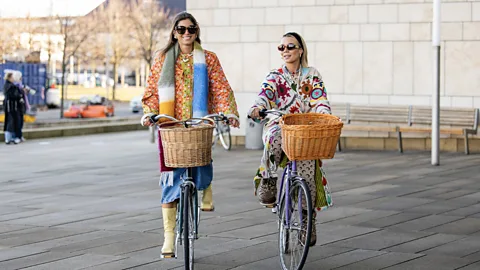 Getty Images
Getty Images"People are obsessed with Scandinavian style because you don't have to change who you are to pull it off," says Laird Borrelli-Persson, a longtime Vogue editor and fashion historian who splits her time between New York and Stockholm. To fashion critics like Borrelli-Persson, "Scandi-girl style" has gone beyond ingrained trends like #BarbieCore and #QuietLuxury to become a larger fashion movement rooted in cool shapes, responsible practices, and an unexpected "ka-pow" of colour or print. "You could say Scandi-girl style is the new French-girl style," says Borrelli-Persson, referencing the longstanding fashion-insider combo of tousled hair, pristine designer bags, and super-skinny jeans and heels. "Scandi-girl style is different. It's layering. It's about shapes. You don't need an Hermès bag and a restrictive diet to pull it off. People who love clothes are finding that idea really liberating."
According to Harvard professor and sociologist Dr Martha Beck, there's a science behind Scandinavian style. "Women in Sweden and Norway have about six hours of sunlight during winter," she tells the BBC. "That's it! So they use fashion to fight off the feelings of depression and listlessness that can come from very dark, cold days."
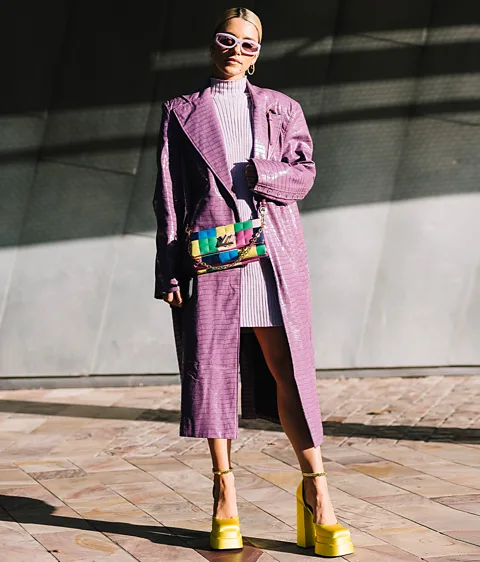 Getty Images
Getty ImagesThe insistence on joyful colours and patterns is a longtime ethos at Marimekko, the 72-year-old Finnish fashion brand that was first sold in Italy in the 1950s, and then brought to the US by Jackie Kennedy in 1960. Today, you can see Marimekko dresses on Carrie Bradshaw in the TV series And Just Like That; actress and producer Sarah Jessica Parker is also a fan in real life. "From the start, our mission has been to bring joy and colour to everyday life through bold prints, especially during the darker seasons," says the brand's current designer, Rebekka Bay, who notes that every Marimekko collection is tested so that wearers can walk, run, jump, "and even dance" in the pieces, which helps to encourage movement and combat feelings of winter sluggishness.
"I think there's an idea that when it's cold, you have to look puffy, and either wear all neon or all grey," says Nnenna Echem, a Norwegian fashion influencer and stylist. "But we're quite inventive with how we layer colours and textures. For instance, I love putting on an oversized leopard-print coat with a very plain grey sweater and a handbag that has a pop of pink. It adds joy and also lets you move around."
For those less inclined to play with bright colours, bold prints can help bring energy into dark times, too, whether it's Marimekko's indigo-printed floral blue jeans from Helsinki or Acne Studios' candy-coloured plaid scarves from Stockholm. "The way Nordic designers use layering to give the eye something complex and exciting to embrace – it's really intentional," says Dr Beck. She says that choosing ebullient prints and colours is a way of "becoming a tiny light" to the larger world through clothing, and that exuberant design can also be a form of "community building".
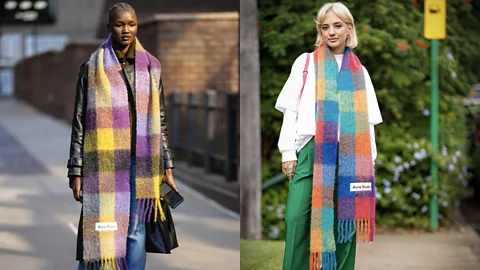 Getty Images
Getty Images"Something you'll notice about most Nordic fashion labels is that they're run by a team," said Borrelli-Persson, noting that many of Copenhagen Fashion Week's biggest breakouts – the slinky date-night favourite Rotate by Birger Christensen, the cool-girl staple Ganni, and the upgraded casuals line Baum und Pferdgarten, along with Toteme – are all designed by a team instead of an individual. "That's really indicative of the Scandinavian ethos of cooperation and of being part of something bigger than yourself," she says. "When you are designing as a benefit to the community and not just for your own fame or wealth, it can be a lot better for your mental health. And when shoppers are given quality items they know they can trust, that's healthier, too."
'Simplicity, practicality, functionality'
"Danish style is very much rooted in simplicity, practicality and functionality which serves as the foundation for creative expression," says Copenhagen Fashion Week CEO Cecilie Thorsmark. In a world where runway collections often feel like theatrical gimmicks instead of exciting everyday options, the focus on wearable style has struck a chord – even among those who used Parisian chic as their personal style benchmark for decades.
That ethos is echoed in current Scandinavian fashion darlings, including the playful Danish brand Cecilie Bahnsen and the basics-with-a-twist label Toteme, both of which add eye-popping details to familiar staples that make the clothes both easier and more fun to wear. At Toteme, that means turning the collar of a standard winter coat into a wrap-around scarf so you never forget yours at home. At Cecilie Bahnsen, it translates to bow-topped frocks that let you customise many pieces to the length of your body, making it easier to layer the dresses under long-sleeve sweaters on cold days, or pull the hem a little higher if you're on the short side.
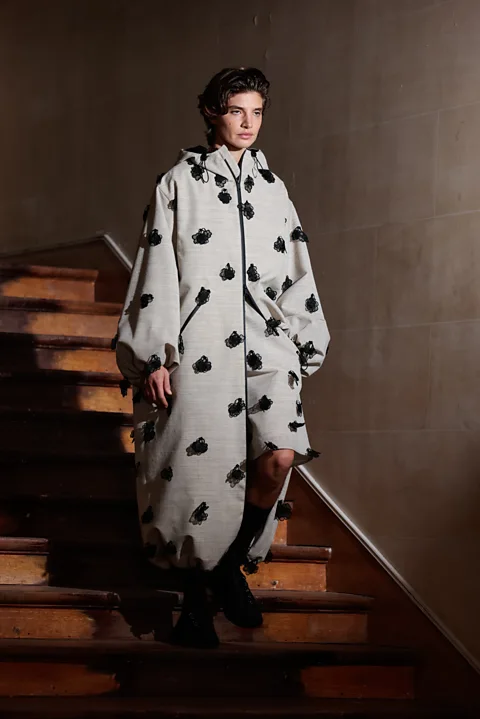 Getty Images
Getty ImagesBahnsen says that her mix of romantic details and practical elements is directly linked to her Danish heritage. "Growing up in Scandinavia, there is an element of functionality that plays a role in how I get dressed," she explains. "My clothes have to work for real life, whether I'm biking to my atelier in the rain, or playing with my son in the bitter cold, windy weather."
Stylist and influencer Echem is a regular attendee of Copenhagen Fashion Week, along with catwalk shows in London and Milan. She says that in the past few years, her audience has "exploded" with international interest from overseas street-style fans and fashion designers alike. "I think people thought all we wore was ski sweaters and hats," Echem jokes. "But our style proves that you can be practical, just never boring. There's a lot of innovation that comes when designers think about how your clothes should work."
The Changing Room
The Changing Room is a column from the BBC that spotlights the fashion and style innovators on the frontlines of a progressive evolution.
This month, London Fashion Week announced updated sustainability requirements for all participating fashion brands, including an emphasis on low-impact materials and a ban on single-use props during runway shows. Where did they get the idea? Copenhagen Fashion Week, which has required all brands to prove that they're not just landfill cocoons since 2023. When the city's next catwalk cycle starts on 27 January, it will open with OpéraSport, an emerging label that only uses recycled and organic textiles in its cool quilted pencil skirts and slouchy Oxford shirting.
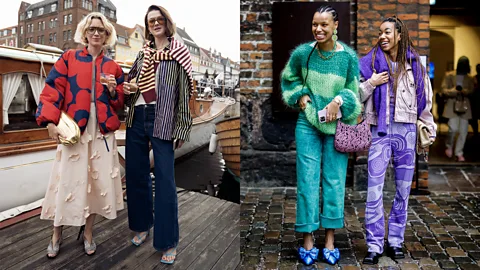 Getty Images
Getty Images"These partnerships are vital for pushing a positive agenda and creating impactful change," says Thorsmark. They're also rooted in a region of the world where, as Borrelli-Persson says, "there are still more trees than people". This means that even fashion companies located in cities like Stockholm or Oslo are, essentially, surrounded by nature. "When I went for some of my first meetings at ECCO, I saw their offices and factory was basically in the woods," recalls Natacha Ramsay-Levi, the celebrated French designer whose kooky ballet flats for the Danish shoe brand have been spotted on Chloë Sevigny. "I felt so inspired and excited to do work there. Nature can make you feel more creative."
But even for those who don't live a life totally in the great outdoors, there's another reason to embrace the Scandi-girl style. "I don't want to go for a hike in the woods every day," says Echem. "But I love to buy and wear pieces that I know will last, and I trust my favourite Scandinavian designers. The quality and style that our brands make will last for years. It can be sustainable and still look extremely cool."
--
If you liked this story, sign up for The Essential List newsletter – a handpicked selection of features, videos and can't-miss news, delivered to your inbox twice a week.
